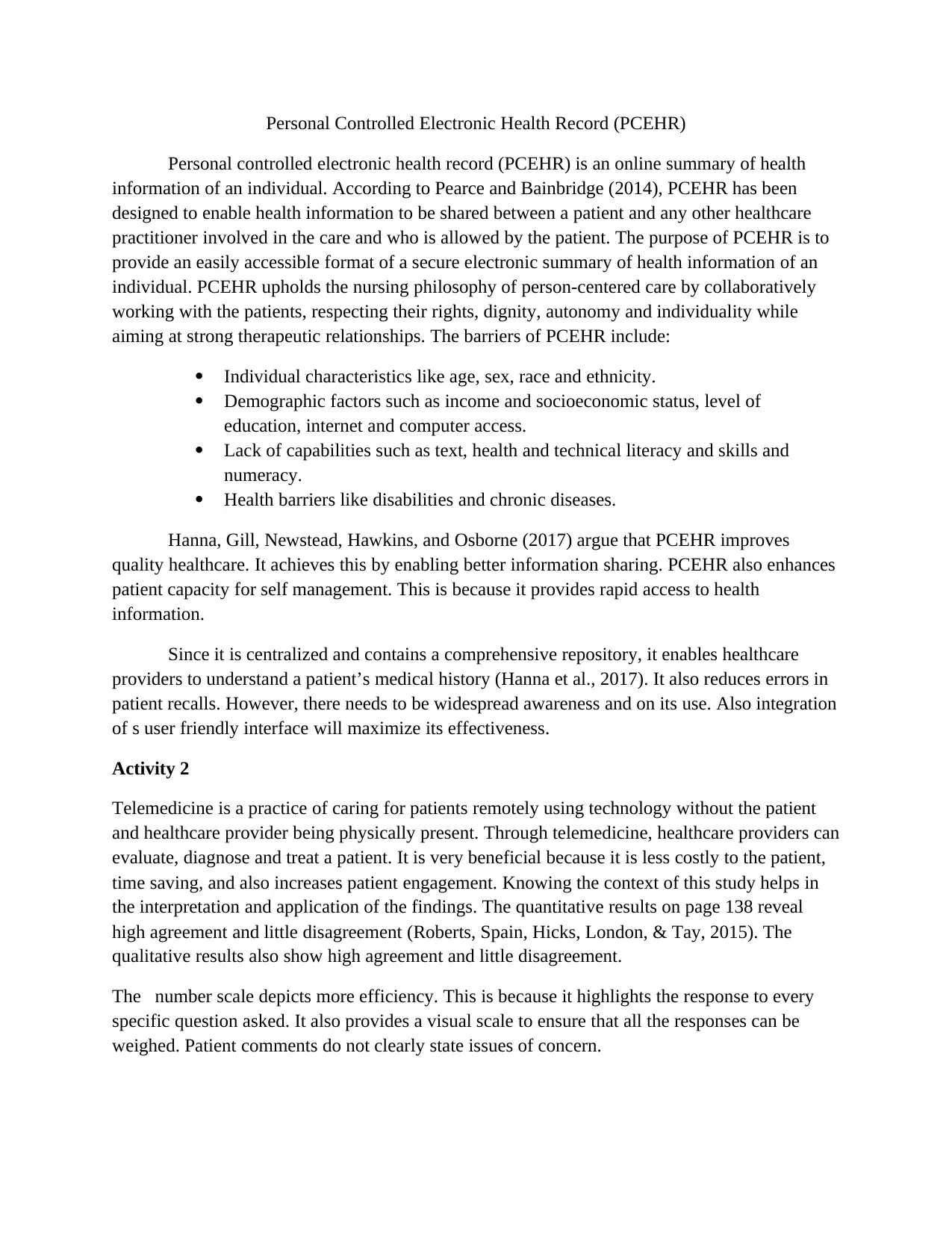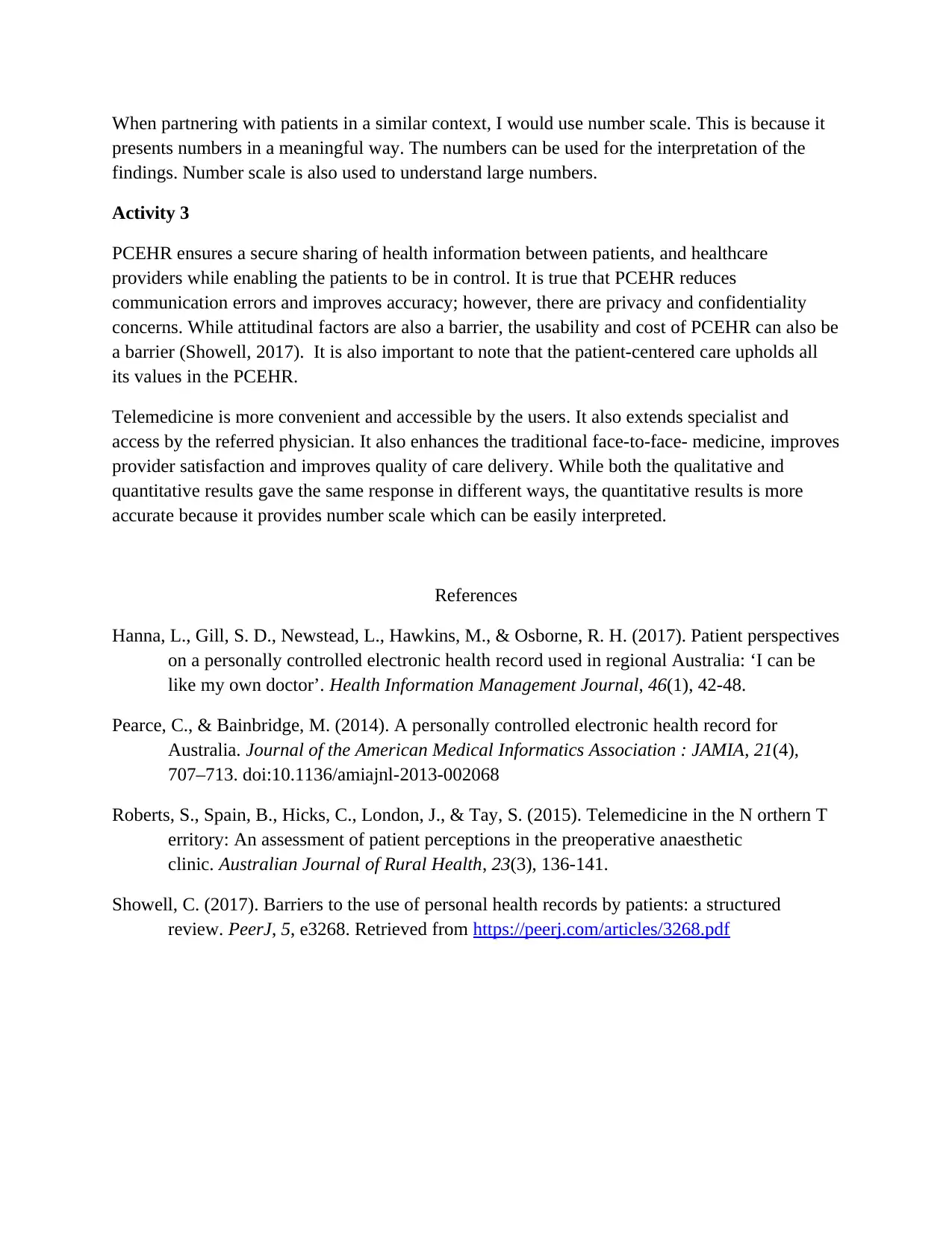NUR1201: Discussion on Telehealth, PCEHR, and Patient-Centered Care
VerifiedAdded on 2022/10/15
|2
|850
|20
Discussion Board Post
AI Summary
This discussion post, completed for NUR1201, focuses on telehealth and personal controlled electronic health records (PCEHR). It addresses the role of telehealth in providing access to healthcare, particularly for those in rural and remote areas, and explores the eligibility criteria, facilitators, and barriers associated with its use. The post also examines the role of telehealth and e-health records in patient-centered care, including the Australian governance and legislation related to e-health record use. The assignment analyzes the benefits of PCEHR, such as improved information sharing and patient self-management, while also acknowledging potential barriers like individual characteristics, demographic factors, and technological capabilities. The post includes a comparative analysis of quantitative and qualitative data from a study on telemedicine, emphasizing the importance of a number scale for interpreting findings and engaging with patients. The post also references relevant literature to support its claims. The assignment fulfills the requirements of a peer discussion activity within the context of the NUR1201 course, focusing on the patient experience and partnering in care.
1 out of 2







![[object Object]](/_next/static/media/star-bottom.7253800d.svg)